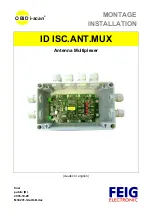
342-86400-498PS
Issue 1.2
April 2012
Page 165
Copyright
GE Multilin Inc. 2010-2012
Traffic Separation and Bandwidth Management
For traffic separation and bandwidth management, several approaches are
available.
Approach 1: Use different ETHER system for each application
Provision only TDM pipe#1 in each ETHER-1000 system. Assign the adequate
amount of SONET bandwidth to each ETHER-1000 system (depending on the
type of application it handles). Use D-PVLAN#1 only.
Pros: This approach guarantees that any individual ETHER-1000 unit
failure will not affect multiple applications.
Cons: Higher equipment cost.
Approach 2: Use one ETHER-1000 system for all applications
Approach 2a
Provision only one TDM pipe and maximize the SONET bandwidth assigned to it.
Try to ensure that the SONET bandwidth assigned is larger than the sum of
expected peak traffic throughputs for individual applications. Assign a separate
D-PVLAN for each application (to a max of 15).
(If external switches are used to combine different application types, these
applications will be on the same D-PVLAN but likely on different QVLANs. In that
case, QVLAN filtering shall be enabled for all ports belonging to this D-PVLAN
while their QVLAN memberships shall be set accordingly.)
Pros: Maximizes use of bandwidth available.
Cons: Traffic flooding generated by higher-priority applications (e.g. due to
a broadcast storm) may affect lower priority applications. Approach
2c reduces the impact of such event.
Approach 2b
Put applications on different TDM pipes by assigning them to specific D-PVLANs,
as follows:
-
TDM Pipe#1: Protection (D-PVLAN#1)
SCADA (D-PVLAN#2)
Metering (D-
PVLAN#3…15)
-
TDM Pipe#2: Voice over IP (D-PVLAN#16)
-
TDM Pipe#3: Corporate LAN (D-PVLAN#31)
-
TDM Pipe#4: Miscellaneous, e.g. video (D-
PVLAN#46…60)










































